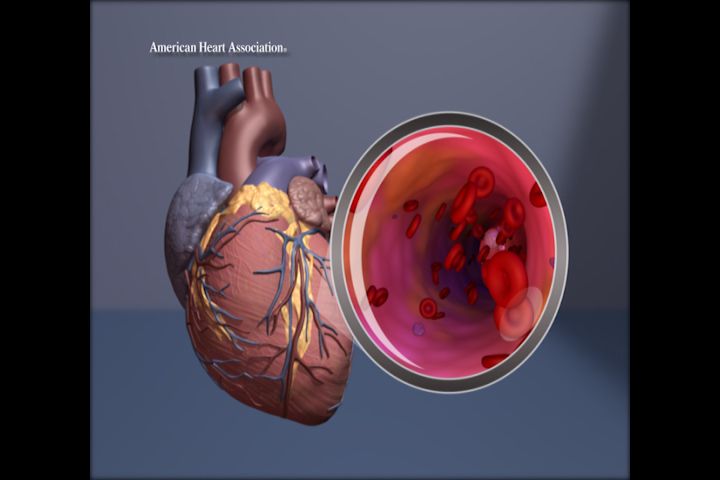
Stress Cardiac MRI Testing Improves Angina Diagnosis and Patient Outcomes
TL;DR
Stress cardiac MRI provides a diagnostic advantage by identifying microvascular angina in patients with clear angiograms, enabling targeted treatment and improved outcomes.
Stress cardiac MRI measures blood flow to detect small vessel problems in patients with chest pain despite normal angiogram results, changing diagnoses in 53% of cases.
This approach significantly improves chest pain symptoms and quality of life scores, particularly benefiting women who often have undiagnosed microvascular angina.
About half of chest pain patients with clear arteries actually have microvascular angina, which stress cardiac MRI can detect to guide proper treatment.
Research presented at the American Heart Association's Scientific Sessions 2025 reveals that stress cardiac MRI testing can significantly improve diagnosis and treatment outcomes for patients experiencing chest pain despite having clear coronary arteries on angiogram testing. The study, conducted by researchers from the University of Glasgow, found that approximately half of participants with chest pain and no obstructive coronary artery disease actually had microvascular angina that was detectable through functional blood flow testing.
According to study author Colin Berry, M.B.Ch.B., Ph.D., professor of cardiology at the University of Glasgow, "People may have real angina even when the main arteries appear wide open. By measuring blood flow with a stress cardiac MRI test, we found that small vessel problems were common. Our findings show that an angiogram alone is not always enough to explain chest pain." The research highlights that women are particularly likely to have small vessel angina that often goes unrecognized with traditional testing methods.
The CorCMR trial enrolled 250 adults with chest pain but no blocked coronary arteries based on previous angiogram testing. Participants were randomly assigned to two groups, with one group receiving diagnosis and treatment guidance based on stress cardiac MRI results, while the other group continued with standard angiogram-guided care. The results demonstrated dramatic improvements in diagnostic accuracy and patient outcomes when stress cardiac MRI was incorporated into clinical practice.
Key findings from the study showed that about 53% of participants experienced a diagnosis change after stress cardiac MRI testing. Approximately half of participants were identified as having microvascular angina, compared to fewer than 1% when relying solely on angiogram tests. More than half of those diagnosed with microvascular angina were women, highlighting the importance of this testing approach for female patients who often present with different angina symptoms.
Patient outcomes showed remarkable improvement in the stress cardiac MRI group. Using the Seattle Angina Questionnaire, which assesses physical mobility, chest pain frequency and severity, and quality of life, participants in the MRI-guided group improved by an average of 18 points at six months and 22 points at one year. In contrast, those in the angiogram-guided group improved by less than 1 point. The 21-point difference between groups after one year represents a clinically significant improvement in quality of life for patients receiving MRI-guided care.
The study methodology involved participants with an average age of 63 years, with about half being women and approximately one in six having Type 2 diabetes. All participants had recent angiogram testing showing clear arteries before undergoing stress cardiac MRI scanning with medication to mimic exercise effects on the heart. The research was conducted across three hospitals in the West of Scotland, with enrollment beginning in February 2021 and follow-up continuing through 2024.
Berry emphasized the clinical implications of these findings, stating, "Clinical practice should now change to include a stress cardiac MRI test for angina, especially for women with chest pain and no blockages in the main arteries. These results may also help inform future clinical recommendations for anyone presenting with angina, and help improve clinical outcomes." The study represents a significant advancement in cardiovascular care, particularly given that chest pain accounts for more than 6.5 million emergency department visits annually in the United States, according to the American Heart Association's Heart Disease and Stroke Statistics – 2025 Update available at https://www.heart.org.
While the study demonstrates clear benefits, researchers note that more investigation is needed to confirm these findings across different healthcare settings and to assess longer-term outcomes such as re-hospitalization rates and survival. The research team also emphasized the importance of ensuring adequate representation of women and historically excluded populations in future studies, given the under-recognition of small vessel angina in these groups. The complete study abstract can be found in the American Heart Association Scientific Sessions 2025 Online Program Planner at https://professional.heart.org.
Curated from NewMediaWire
